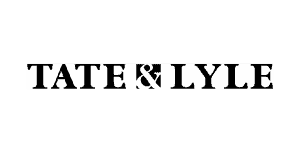Noise can be troublesome for a multitude of reasons. This is especially true in the workplace. Some of the damage it can cause could be permanent. To prevent this, you’ll need to lower the sounds produced by your machinery. You can use our silencers to do so. It’s possible to install them on a discharge vent, as well as other outlets including exhausts and more.
Noise mitigation is often necessary to adhere to permits for all sorts of projects. By misunderstanding the most efficient noise management methods, you can derail your project. This will result in a waste of money and time, so you need to avoid it.
Something else you should know here is that there are several noise myths. These can point you in the wrong direction. However, if you know what they are, it’ll be possible to lower noise’s effects defensibly and responsibly. Let’s look at two of the main ones here.
Barriers are a universal solution
The first myth is that noise barriers can solve any issue. However, by themselves they are only typically able to minimise mid-frequency sound by 10 to 15 dBA within 100 feet of the battier. Some noise prediction models reveal sound reductions exceeding 20 dBA. This is for receptors hundreds of feet away from barriers.
Results from a model could satisfy project approval requirements. But, once operations start and you have the barriers in place, it may become clear that the noise levels you were estimating don’t match operating conditions. The efficiency of barriers is restricted by the fact that sound waves diffract around and over them. Atmospheric effects on sound travel exacerbate this problem. So, noise barriers often become ineffective past 500 feet.
Acoustic panels can solve all issues
Another myth is that acoustic panels can overcome any noise issue. In reality, their purpose is to limit unwanted reflections that cause echoes or reverberation. So, only using them will solve a problem exclusively relating to these two factors.
We’ve become comfortable with seeing acoustic panels installed on walls or ceilings. Or, they can be a set of porous tiles that completely cover ceilings. What we’re implying here is they have absorptive attributes. Alternatively, we think they can absorb a lot of sound energy.
The truth is that acoustically absorptive substances only manage sounds that reflect off exteriors. This is at a distance from a listener or source. They don’t influence the sound that travels straight from the source to the listener. Not to mention, there are many noise concerns that only silencers can address.
Talk to us if you need help with silencing a discharge vent
At Ventx, we make all our silencers at our UK base. We’ve been able to satisfy a lengthy list of clients. All of them have different, noisy jobs that put people and the environment at risk. With our merchandise however, they can operate safely and efficiently.
So, if you need a silencer for your discharge vent, make sure you come to us. We’d love to help, and can devise the perfect noise solution for any needs.









